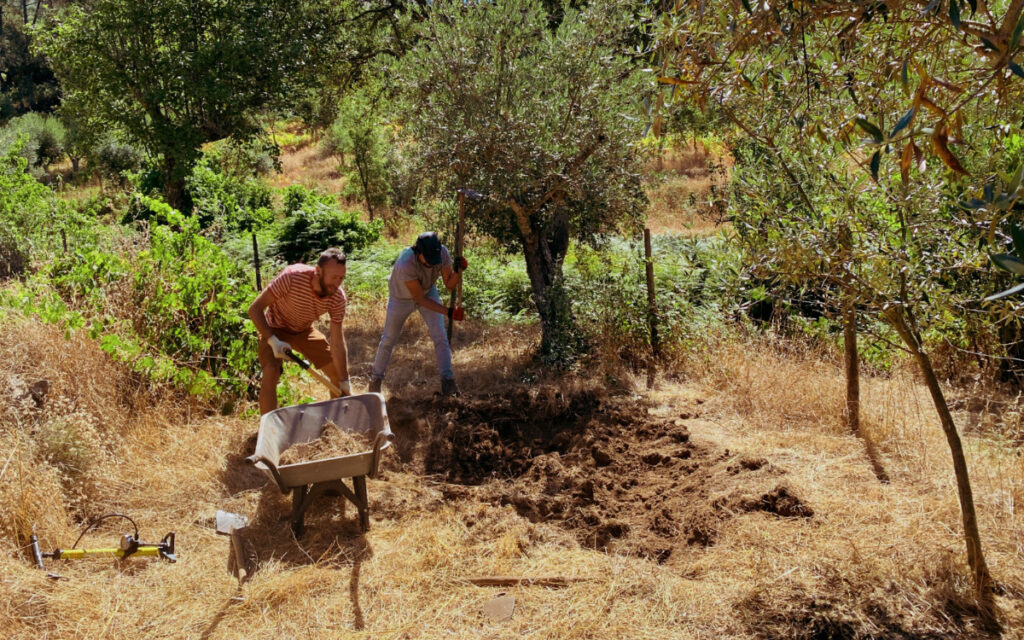
The Farm & Project
The Quinta Project and the São Mamede Wine Project are located on three properties in the Alto Alentejo (Portugal) and Extremadura (Spain).

The Farm
Our farm spans across 5.5 hectares of land on the Portuguese side of the border. It serves as a hub for gatherings, welcomes volunteers, and invites visitors to join our land project (you can explore volunteering opportunities here). Within this vibrant space, we cultivate vegetables not only for our own sustenance but also to supply our cozy cafe and guesthouse.
Our farm is a tapestry of diversity, a place where joy, respect, wonder, and delight converge. It’s a sanctuary where you’re embraced just as you are.
Sustainability is at the core of our farm, we use no chemicals in our gardens and we incorporate permaculture principles and designs whenever possible.
Here, alongside fellow beings, we engage in daily rituals that provide room for introspection and the contemplation of our encounters and experiences.

Besides the farm, the project also consists of a vineyard and a guesthouse, with a cosy vegetarian café and natural wine bar. For more information about these, see the website of the São Mamede Wine Project.

